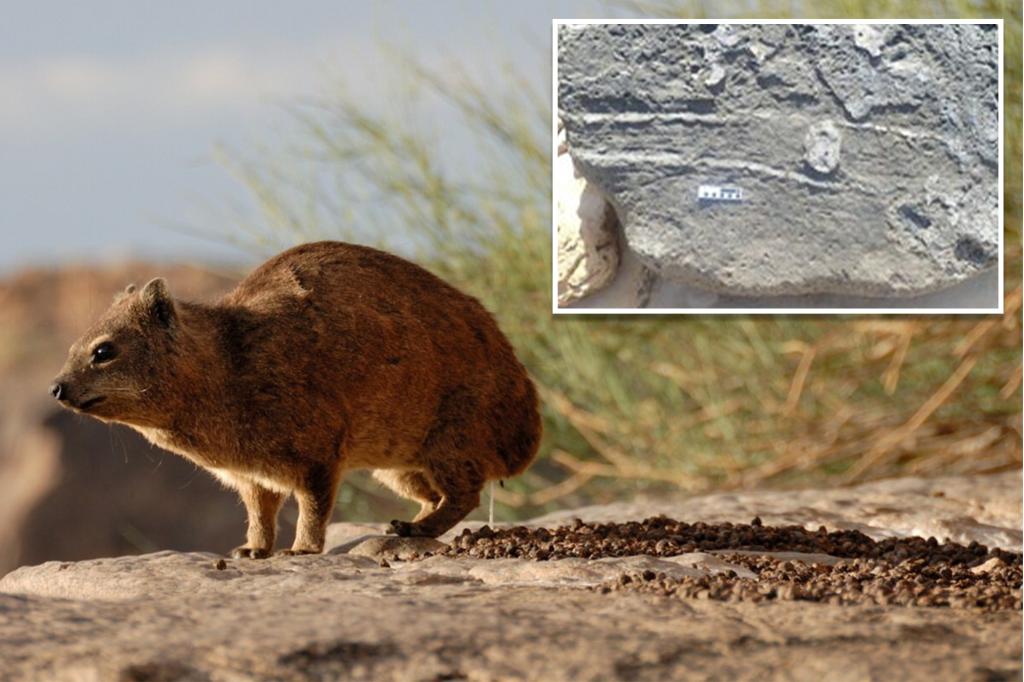Turns out Toby’s new trick is thousands of years old.
A pair of recently discovered fossils from Africa has immortalized a small critter’s 126,000-year-old butt-dragging habit, according to paleontologists.
The fossils unearthed by the African Centre for Coastal Palaeoscience feature a tracksite and apparent butt-dragging impression believed to have been made by a rock hyrax, a stout rodent-like mammal that resembles a prairie dog or gopher with a set of vampiric teeth, according to a new report in ScienceAlert.
The bulbous animals, commonly known as dassies, survived the Ice Age and currently live in rocky terrain in parts of Africa.
To this day, hyraxes drag their butt along on the ground similarly to dogs stricken with a parasitic infection. It’s unclear what causes the act in the dassies, but approximately 126,000 years ago, one did so and left a clump of its feces on the ground.
“In the world of paleontology, anything this unusual is important and we feel privileged to be able to interpret them,” the researchers wrote in the report.
The team dissected the fossils down to the smallest crack.
They determined that the butt-dragging impression was approximately 95 cm long and 13 cm wide with five parallel striations. They noted a raised feature near the outer rim that was roughly 2 cm high.
“Clearly something was dragged across the surface when it consisted of loose sand,” the team wrote.
The researchers probed other possibilities that were quickly eliminated, including theories that the fossil was tied to a predator dragging its prey or a scuff mark made by an elephant’s trunk.
They found their answer in the location of the fossils. Hyraxes tend to deposit their urine and feces in the same areas for generations, thanks to their intense communal habits, the scientists explained. They then deciphered that the fossil belonged to the species.
In the paleontology world, fossilized urine is known as a urolite, and dung, a coprolite. Because of hyraxes’ habits that have persisted for thousands of generations, the scientists joked that the small animals have “contributed the lion’s share of the world’s urolite.”
“Through appreciating the importance of butt-drag impressions, urolites, coprolites, and hyraceum, and learning about the environment of rock hyraxes and other animals during the Pleistocene, we will never view these endearing creatures in the same light again,” they wrote.
Read the full article here


